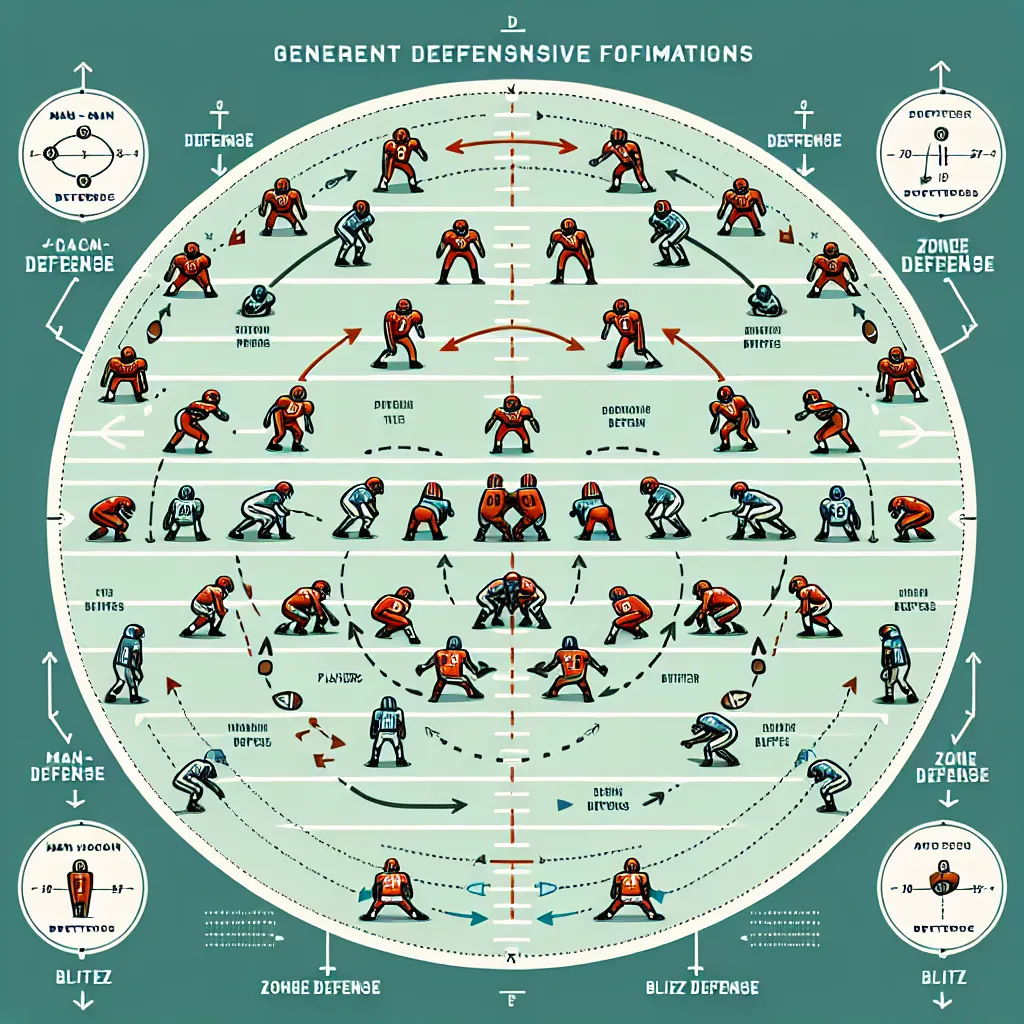Defensive formation is a crucial concept in team sports, particularly in football (soccer) and American football. As an IELTS candidate, understanding this term and its related vocabulary can significantly enhance your performance in the exam, especially when discussing sports-related topics. Let’s dive into the intricacies of this term and explore how you can effectively use it in your IELTS preparation.
Definition and Pronunciation
Defensive formation (noun) /dɪˈfensɪv fɔːˈmeɪʃən/
Definition: A strategic arrangement of players in a defensive position on the field or court, designed to prevent the opposing team from scoring.

Context and Usage
Understanding the context in which “defensive formation” is used is crucial for mastering this vocabulary. Let’s examine some examples:
-
The coach implemented a new defensive formation to counter the opponent’s aggressive attacking style.
Analysis: This sentence demonstrates how defensive formations are tactical decisions made by coaches in response to the opposing team’s strategy. -
Players must be versatile to adapt to different defensive formations throughout the match.
Analysis: This example highlights the importance of player flexibility in modern sports, where formations may change during a game. -
The team’s success was largely attributed to their solid defensive formation, which conceded very few goals throughout the season.
Analysis: Here, we see how a well-executed defensive formation can contribute to a team’s overall performance and success. -
Analysts spent hours studying the opponent’s defensive formation to identify potential weaknesses.
Analysis: This sentence illustrates the strategic importance of understanding defensive formations in professional sports. -
The innovative 3-5-2 defensive formation revolutionized the team’s playing style and results.
Analysis: This example shows how specific defensive formations (like 3-5-2) can significantly impact a team’s tactics and outcomes.
In the context of IELTS, “defensive formation” is most likely to appear in Reading passages related to sports or in Speaking and Writing tasks that involve discussing sports strategies or teamwork. Its frequency in IELTS is moderate, primarily appearing in sports-related content.
Vocabulary Analysis
Structure:
- Defensive (adjective): relating to or intended for defense
- Formation (noun): an arrangement or pattern
Synonyms and Antonyms:
-
Synonyms:
- Defensive setup /dɪˈfensɪv ˈsetʌp/ (noun): an alternative term for the arrangement of players in a defensive position
- Defensive strategy /dɪˈfensɪv ˈstrætədʒi/ (noun): the overall plan for defending, which includes the formation
- Defensive line /dɪˈfensɪv laɪn/ (noun): specifically refers to the arrangement of defenders closest to their own goal
-
Antonyms:
- Offensive formation /əˈfensɪv fɔːˈmeɪʃən/ (noun): the arrangement of players in attacking positions
- Attacking setup /əˈtækɪŋ ˈsetʌp/ (noun): the positioning of players for offensive purposes
Memory Techniques
Mind Mapping:
Create a mind map with “Defensive Formation” at the center, branching out to related concepts such as:
- Types of formations (e.g., 4-4-2, 3-5-2)
- Key defensive positions (e.g., center-back, full-back)
- Defensive tactics (e.g., marking, pressing)
- Sports that use defensive formations (e.g., football, basketball)
Visualization:
Imagine a football pitch with players arranged in a specific defensive formation. Visualize how they move and work together to prevent the opposing team from scoring.
Practice Exercises
-
Writing Task:
Write a paragraph describing a memorable match where a team’s defensive formation played a crucial role in the outcome. Use at least three of the vocabulary words discussed in this lesson. -
Speaking Practice:
Explain to a partner the importance of defensive formations in team sports. Discuss how they can impact a game’s result and why players need to be adaptable. -
Reading Comprehension:
Find a sports article that discusses defensive tactics and identify how the term “defensive formation” is used in context. Note any related vocabulary that could be useful for IELTS.
Conclusion
Mastering the term “defensive formation” and its related vocabulary can significantly enhance your ability to discuss sports strategies in the IELTS exam. Remember to practice using this term in various contexts, whether you’re describing a specific game, discussing team tactics, or analyzing sports trends. By incorporating this vocabulary into your language repertoire, you’ll demonstrate a nuanced understanding of sports terminology, which can be particularly valuable in the Speaking and Writing sections of IELTS.
We encourage you to put these new terms into practice immediately. Try using “defensive formation” in a sentence or create a brief story involving a team’s defensive strategy. Share your examples in the comments below, and don’t hesitate to ask any questions about this vocabulary or how to use it effectively in your IELTS preparation!